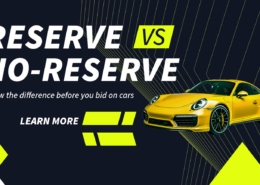 https://auction.ridesafely.com/images/2018/10/banner-truck-auctions-for-everyone.jpg
865
1440
RideSafely
/images/2025/01/ridesafely-logo.svg
RideSafely2025-09-26 12:10:232025-09-26 14:53:10How to Buy Your Next Truck at an Auto Auction
https://auction.ridesafely.com/images/2018/10/banner-truck-auctions-for-everyone.jpg
865
1440
RideSafely
/images/2025/01/ridesafely-logo.svg
RideSafely2025-09-26 12:10:232025-09-26 14:53:10How to Buy Your Next Truck at an Auto AuctionRoughly 40.8 million used cars were sold in the US last year, more than twice the sale of new cars. While it is inevitable that all cars start depreciating the moment they leave the showroom, how much of their value they lose with time is decided by a whole host of different determinants. Whether you are looking to buy or sell, it could be incredibly helpful to know of the main factors that go into determining the value of a used car.
Mileage and Service History
A car’s mileage is by far the biggest deciding factor in its value. The more miles a car has clocked in, the more wear and tear it has likely to have experienced. A car with more miles potentially means a car with more frequent repairs and part replacements. However, some of the associated declines in value that comes with mileage can be offset by having a full service history. This assures buyers that you are a responsible owner and that the car has been clearly looked after.
Condition
Although a used car’s condition is often closely associated with mileage, they are separate factors. An abused wreck of a car with 10,000 miles obviously won’t be fetching a higher price as compared to a well-maintained counterpart with 100,000 miles.
Value that is based on a car’s condition is arguably going to be more subjective. Different buyers will base how ‘good’ a car’s overall condition is on their own preferences. Some buyers might see a car with numerous dents and scratches but with a perfectly working transmission as ‘great’ in condition while others might be more influenced by its external looks and perceive the car to be in ‘bad’ condition.
If your car is in need of minor repairs, you should always have them performed before considering to sell it. In the overwhelming majority of cases, the costs of such repairs will always be less than the value reduction otherwise. A replacement side mirror could be bought off eBay for some 12-30 dollars, trying to sell a used car with a broken one could well translate to a loss of hundred or so dollar in value.
For major repairs, it can get somewhat more complicated. You could try using authoritative online resources such as Kelley Blue Book to have an estimate of your car’s pricing. Then you can consult a mechanic to give you a quote of the repairs or replacement costs and do the math to see if the cost could be offset by the increase in value.
Options
Options can both contribute and take away from a used car’s value. Certain options, such as all-wheel drive, panoramic moonroof, and automatic climate controls, tend to always justify a fair price increase. However, ‘luxury’ add-ons such as leather seats, a premium stereo, heated seats are more of a hit and miss, with some buyers willing to pay the added premium for them, while others don’t see them as justifying a higher price tag.
Personalization
More often than not, aftermarket upgrades and other forms of personalization will always hurt a car’s resell value. Most buyers have a preference for unmodified vehicles; one can never be sure how well certain aftermarket upgrades might work on the car.
Then, there is are the possible insurance implications to worry about that may put off even those buyers who otherwise wouldn’t have minded those changes. In addition, what you might consider as an enhancement will not be seen as such by a prospective buyer.
Location
Location also plays a big factor in deciding how much a used car might get sold for. While mid-priced family cars are virtually always sought after in urban areas, more niche cars might do better in certain areas compared to others. For instance, if it’s a large car with off-road capability, you will more likely find buyers from the countryside willing to put up with a higher price compared to those living near the center of a large metropolitan.
Exterior Color
A car’s color can potentially have significant influence over its selling price. Used cars in more mainstream colors (e.g., black, white, gray, silver) generally fetching higher prices than their counterparts in more unconventional colors (e.g., brown, orange, purple, pink).
This shouldn’t be taken as a clear-cut rule; however, a lot of individuals select cars that fit their personal preferences rather than for economic reasons. With that said, if your pink is struggling to sell, then it’s a clear indicator that a respray is in order.
Venue
The channel through which you try to sell your used vehicle can also greatly impact its value. Generally, at car dealerships, you are likely to have your used car sold for less than through a private sale or through an auction. While time and lack of convenience are often the negatives of selling through such channels, these drawbacks aren’t as much if you opt to go online.
Presentation
Presentation matters everywhere, including when it comes to selling your car, especially in a private sale. Seeing a clean, polished, and rust-free car is likely to put many of its problems at the back of a buyer’s mind when they are inspecting your car. Having your old car cleaned by a professional is cheap, but it can certainly translate to a hundred or so more dollars you earn from the used car sale.
Over to You
What do you think are other factors that determine the value of a used car? Have any opinions on the article you would like to share? Feel free to share your thoughts with us in the comments below. Don’t forget to share this article with others in your circle if you found it a worthwhile read.
Tweets by @RideSafely
[sr site=”tw” type=”carousel” id=”RideSafely” options=”minWidth:130,numItems:2,count:5,length:150,hideReplies:true”]






Leave a Reply
Want to join the discussion?Feel free to contribute!